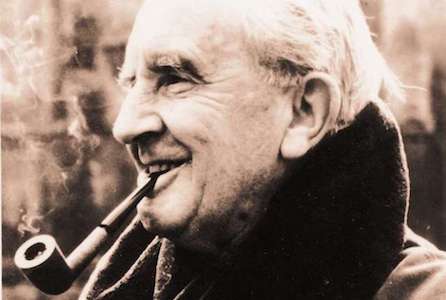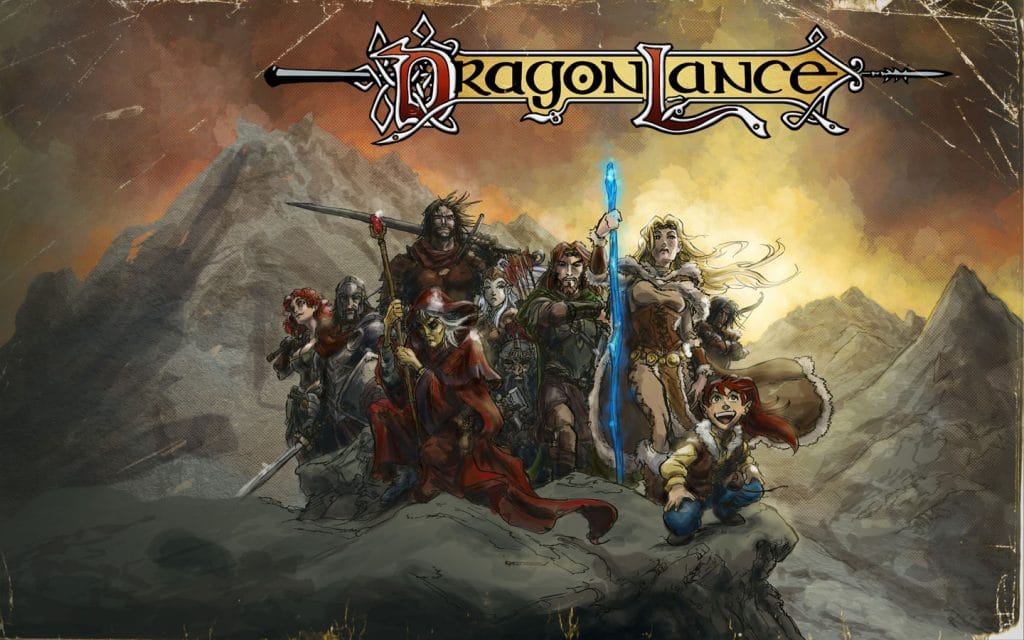Are you familiar with the term “eucatastrophe?” It’s understandable if you aren’t, eucatastrophe is a deep cut.
Eucatastrophe is a term coined by JRR Tolkien, who used it to describe an unexpected turn of events in which the protagonist is saved from certain doom. So, eucatastrophe is the inverse of a catastrophe, and we see this play out in the stories we love all the time. Right when all looks hopeless, the hero saves the day against all odds.
Applied to roleplaying games like Dungeons and Dragons (D&D), a eucatastrophe is the opposite of a TPK. It’s the hopeful, optimistic worldview of players who deep down in their heart of hearts knows they’ll get that sweet, sweet natty 20 roll right when they need it most.
The concept of eucatastrophe – the good guys being the good guys and winning in the end – isn’t in vogue and hasn’t been for some time. This sense of hope dropped out of favor in comic books in the 80s, with Alan Moore and Frank Miller deconstructing everything. Heck, their stories rarely had a hero at all, choosing instead to have an “anti-hero” run supreme, a protagonist that could hardly be classified as good on the D&D alignment scale.
But D&D co-creator Gary Gygax was a Tolkien devotee, so early D&D adventures had a sense of eucatastrophe, even if other popular fantasy fiction was pulling the direction of Miller and Moore. Religious Studies professor Joseph P. Laycock notes that, “D&D, and particularly classic campaign settings like Forgotten Realms and Dragonlance, generally assumed fantastic worlds in which evil is powerful but never triumphant, and the ability of the heroes to succeed in not only possible but likely.”
The first Dragonlance game module for D&D, Dragons of Despair, and the first Dragonlance novel, Dragons of Autumn Twilight were published in 1984 and they, in particular, had that spirit of eucatastrophe.
But let’s back up.
Gygax drew a lot of inspiration from classic sword & sorcery and low fantasy. Tolkien’s Lord of the Rings was primary but it is clear that D&D owes a lot to many other fantasy stories. Look no further than the famous Appendix N, a bibliography of these influences that was included in AD&D Dungeon Master’s Guide.
Interestingly, many of these classic fantasy stories don’t really feature heroic protagonists. Many are straight-up con-men. Cugel the Clever from Jack Vance‘s Dying Earth, Gray Mouser from Fritz Leiber’s Lankhmar series, and pretty much everyone from Michael Moorcock‘s Elric books are guilty as charged. Their adventures consist of scheming and capers, and any heroism is typically accidental.
Conan the barbarian, most famous of all, is a murderer that scoffs at the softness of civilization and only gets a pass because he steals from the elite and kills those seemingly worse than himself. He then ultimately participates in the debauchery himself.
Stan Lee exuded eucatastrophe in 60s comics. But as mentioned before, comics then shifted toward antiheroes. Meanwhile, early D&D drew inspiration from throwback fantasy that was already highlighting antiheroes. Early D&D, like the Greyhawk setting, took its cues not from Stan Lee and Tolkien, but from Vance and Moorcock.
Sure, there were kingdoms to protect and monsters to kill, but primarily for the purpose of looting the corpse. In fact, an early character class was called simply “thief.” And that’s OK! This was all understandable because linear advancement in roleplaying games is predicated on gaining items, many of those times taken off a corpse.
So, save few others beyond Stan Lee and JRR Tolkien, many characters in fiction and most early D&D characters were rarely heroic — they were largely scavengers and scalawags with flexible morals who delved into ruins to steal treasures, killing anyone or anything along the way.
Now, back to Dragonlance. “Dragons of Autumn Twilight,” the first novel entry in the Dragonlance chronicles, burst onto the scene in 1984, still early in the history of D&D. Dragonlance featured heroic characters, which isn’t surprising considering it was co-written by Tracy Hickman, a person of deep faith.
Hickman has stated that he likes writing in the fantasy genre because it “is about ethical and moral choices—the questions of good and evil” and because it reflects “the story of all of us on our journey through mortality and our seeking to return home to Christ.”
And Dragonlance was a huge hit. The books, the characters, the modules, the setting…all of it.
But the popularity of Dragonlance didn’t influence play styles at first. Frankly, at that time my characters were all unrepentant murder hobos. Yet the winds of change were indeed blowing and the source of the breeze was D&D fiction.
RA Salvatore’s Icewind Dale books were released right at the time of D&D 2E in 1988 and the character of Drizzt we all know is a Drow with a heart of gold that goes against the evil nature of his heritage. And Drizzt is surrounded in the Icewind Dale books by an adventuring party of heroes.
By the time 3E rolled around, the game mechanics were even getting more heroic. Feats allowed brave acts of derring-do and wildly over-the-top actions. To coincide with this, players were imagining their characters in a more heroic light as well. Murderous hobos were often replaced by a more sensitive type, unlocked by a growing effort being put into the roleplaying element.
This wasn’t true everywhere obviously. Nineties games like Vampire: The Masquerade served up a sullen, moody RPG that became the ultimate anti-hero tome, featuring a playstyle where characters battled their inner demons more than they battled outer ones. There were no heroics or solutions offered in the game, merely a general contempt for humanity.
This isn’t wholly surprising. Vampire very much reflected on the experiences of Gen X, the OG gamers who had suffered through the Satanic Panic for only wanting to play a game. You could forgive them for not having a deep sense of eucatastrophe.
But even as a card-carrying Gen Xer, I confess that I still hold a certain hope for eucatastrophe. The spark of Tolkien will forever be buried somewhere inside of me. And I concede that most of the other Nerds on Earth writers think I’m crazy for this. While I keep spouting “with great power must come great responsibility,” they’re largely digging on Deadpool.
But enough of that, let’s fast forward to today. Streaming and shows like Critical Role have turned many things to eleven. Streaming shows tell huge stories about good-hearted characters who grow into great heroes that often sacrifice themselves for the sake of the world.
Characters nowadays sure are a hot mess. But they are played to ultimately be heroic in the end.
Maybe this is by design. As 5E is largely about power fantasy and character creation, and if rules and writing are an indicator of what a game is all about, then it seems apparent that 5E is about fulfilling the player’s dream of being or becoming a powerful hero.
Sort of like a meek hobbit thrust upon a dangerous quest or a nerdy teenager that had to learn the hard way that with great power must also come great responsibility.
It’s ironic, really. Gary Gygax drew inspiration from Tolkien but was building from a foundation of wargaming where the mechanics rewarded scoundrel-like behavior. But then the fiction of Hickman and Salvatore helped to slowly unlock a new narrative imagination of players.
But D&D is just a game, after all. It can simply offer a respite to a person’s daily struggles. Yet I’ll take even that. So, I’m always cool being the Paladin or the Cleric, playing with a sense of eucatastrophe. And I fully hope to win in the end…



